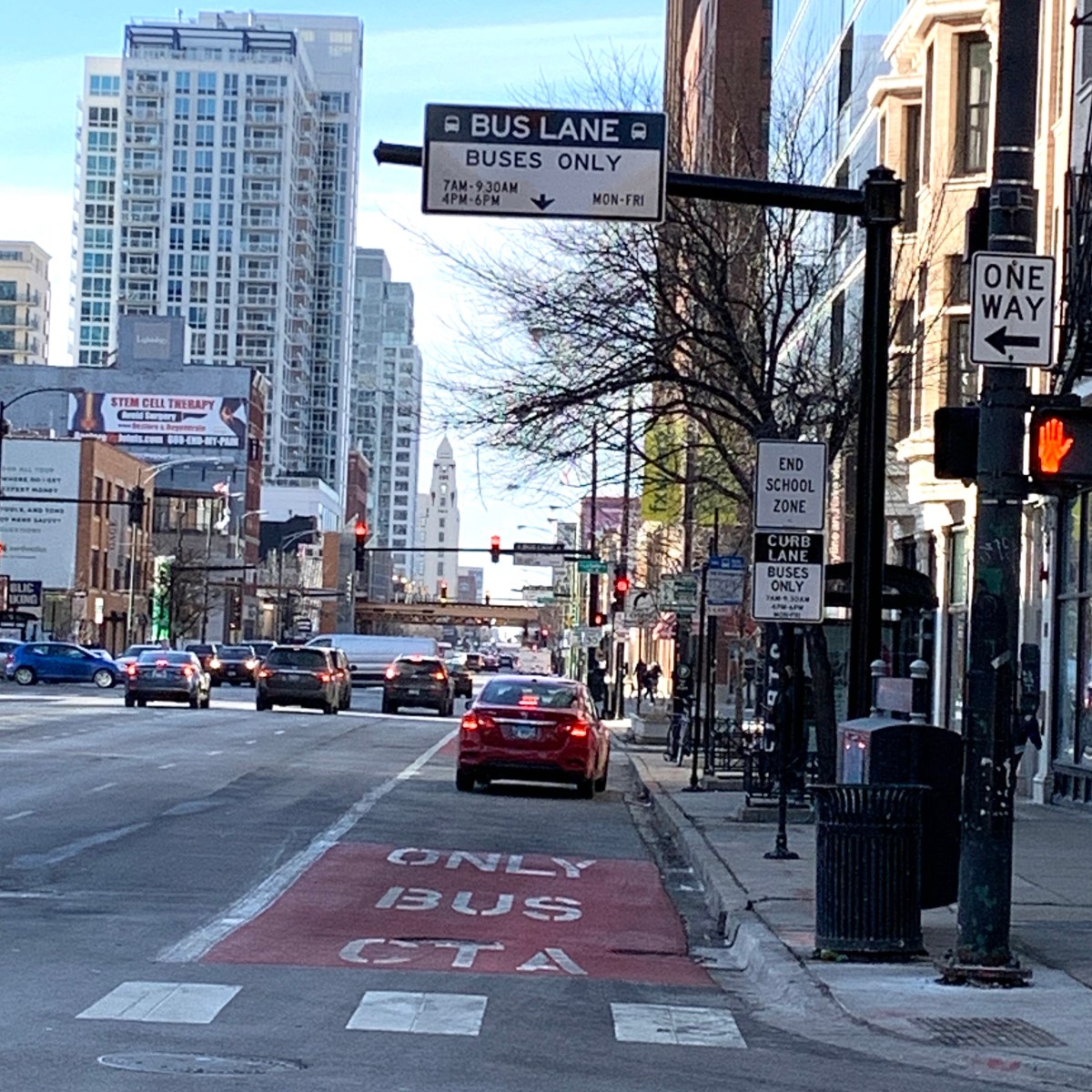Chicago is slowly coming out of pandemic hibernation, months after Illinois' Stay at Home order kicked in on March 21. Along with the reopening of the Lakefront Trail, closed parks, restaurants, and other retail establishments, downtown offices and other workplaces are coming back to life.
In order to avoid a major spike in driving, the city needs to make sure that non-car transportation options are as safe and appealing as possible. In addition to creating more safe space for walking and biking, it's going to be crucial to ensure buses and trains are properly sanitized, and that there's enough capacity on the vehicles for social distancing. This week the CTA launched a Ridership Information Dashboard that shows which bus routes have been experiencing crowding, so that passengers can make informed decisions about their commutes and hopefully choose less-busy times of day to travel.
But one aspect of pandemic transit strategy where Chicago is lagging far behind peer cities is creating dedicated bus lanes, so that passengers spend less time time onboard, reducing their risk of viral exposure. For example, earlier this month New York mayor Bill de Blasio unveiled 20 miles of new busways and bus lanes as part of that city's COVID response (and local transportation advocates say that isn't enough.) But Chicago doesn't seem to have plans for pandemic bus lanes at all.
In late May, Chicago Department of Transportation chief Gia Biagi told Crain's magazine that the city was considering rolling out new bus lanes, but there have been no announcements since then. Today CDOT spokesman Mike Claffey simply said the department has been in talks with the CTA about "pop-up bus lanes."
Transit agency spokesman Steve Mayberry confirmed that. "CTA is in discussions with CDOT about the potential for temporary bus lanes to help in cases of increased personal vehicle traffic along busier corridors. As has been the case throughout the pandemic, our goal is to keep those who need public transit for essential work or other essential trips moving as quickly as possible to minimize their time spent on a bus."
Active Transportation Alliance advocacy manager Julia Gerasimenko said it's time to hit the gas pedal on building more bus lanes. "It’s now an imperative in terms of public health to make sure the people are getting where they need to go as quickly as possible to limit exposure." She noted that speeding up the buses is also a racial and economic justice issue. While transit use has dropped steeply overall during the crisis, "The CTA buses and the Pace buses are seeing the highest ridership [on the South and West sides]. It’s imperative that we invest in our buses right now because it’s serving the people who cannot afford to stay at home."




